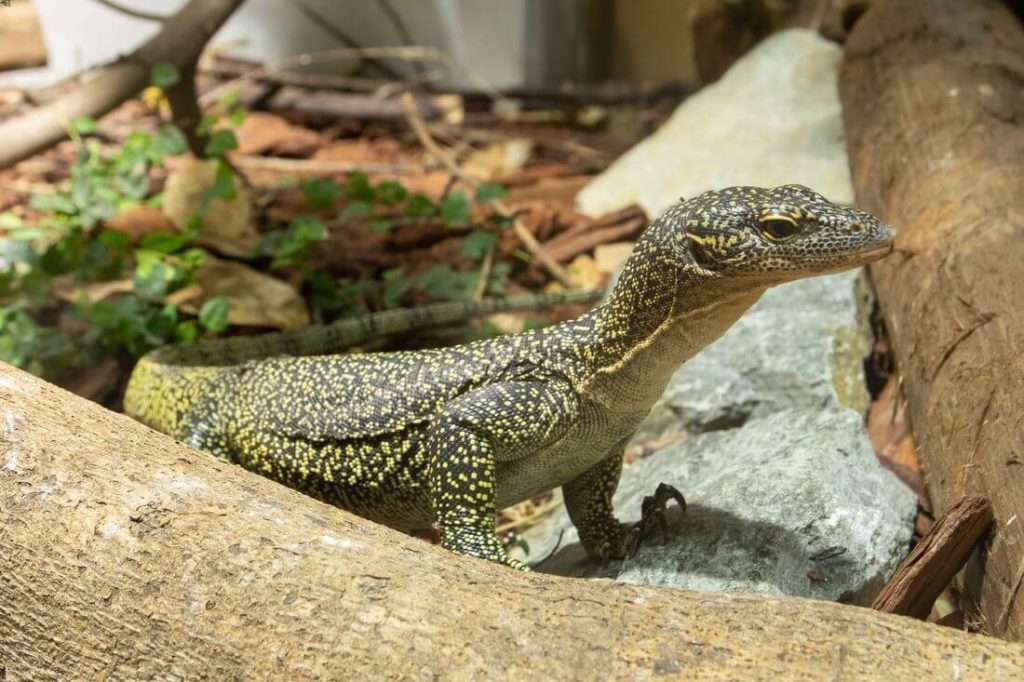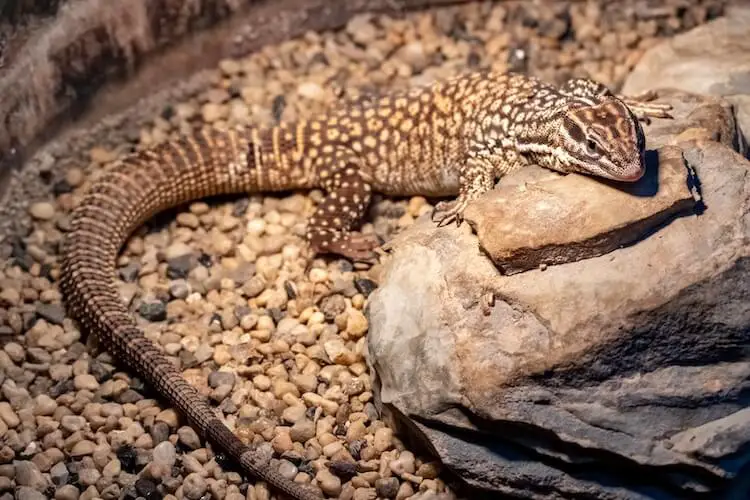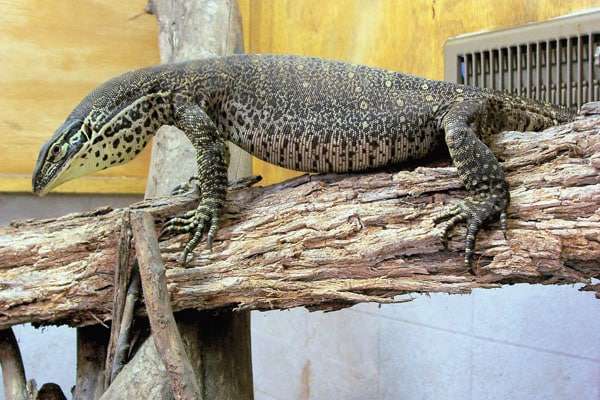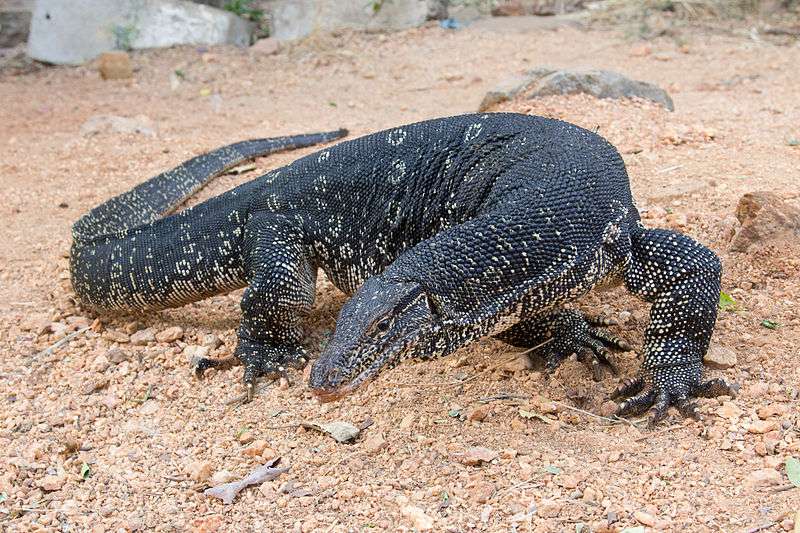
Description
Scientific Name: Varanus yuwonoi
Life span: 12- 20 years
Black-backed mangrove monitor is also called Tri-colored monitor lizard. Due to the extreme difficulties of studying this species, the size of tricolor monitors at full maturity is presently unknown. The biggest individual measured 1.46 meters but was not completely mature. The species’ body is yellow, while its tail has a vivid blue color. It has a yellow tongue. When compared to the majority of monitors, including those to whom it is closely related, the tail is severely compressed and the teeth are proportionally quite long.

Native Region/Habitat
Tricolor monitors are indigenous to Halmahera Island and are mostly found in the interior jungle, where they coexist peacefully alongside silver, turquoise, and maybe Rainer Günther’s monitor.
Behavior
They are partially arboreal and carnivorous. They frequently congregate around nest mounds dug by megapodes, which draw smaller birds, tiny reptiles, and insects that they could hunt with their exceptionally large teeth. They have been known to dig up mounds and devour the eggs within, and they may even eat megapode chicks.
They may show aggressive behavior if stressed in captivity. Perhaps if a specimen was collected as a youngster and handled regularly, it might mature into a manageable monitor that would not fear its keeper as an adult. With consistent handling starting at a young age, the majority of the monitors in the Mangrove family may be made manageable; presumably, tri-colored monitors can be as well.
Care As a pet/In captivity
It is a highly excitable monitor that enjoys climbing, digging, and soaking in its water dish. It will thus require enough room to feel safe and operate well. Keep these behaviors in mind while buying or creating an enclosure. To prevent having to move the animal to progressively larger cages, it is advisable to start with the largest enclosure you can. The bare minimum enclosure size is 6.5 feet long by 4 feet high by 3 feet deep. Obviously, the monitor will fare better in a larger cage. For these, shelves or logs elevated high inside the cage are a need. Many hides, both high and low, as well as anything placed on the substrate—for example, a piece of wood or something similar—must be given since they like digging holes in it. Every day, clean bowls with fresh water should be provided.
Table





